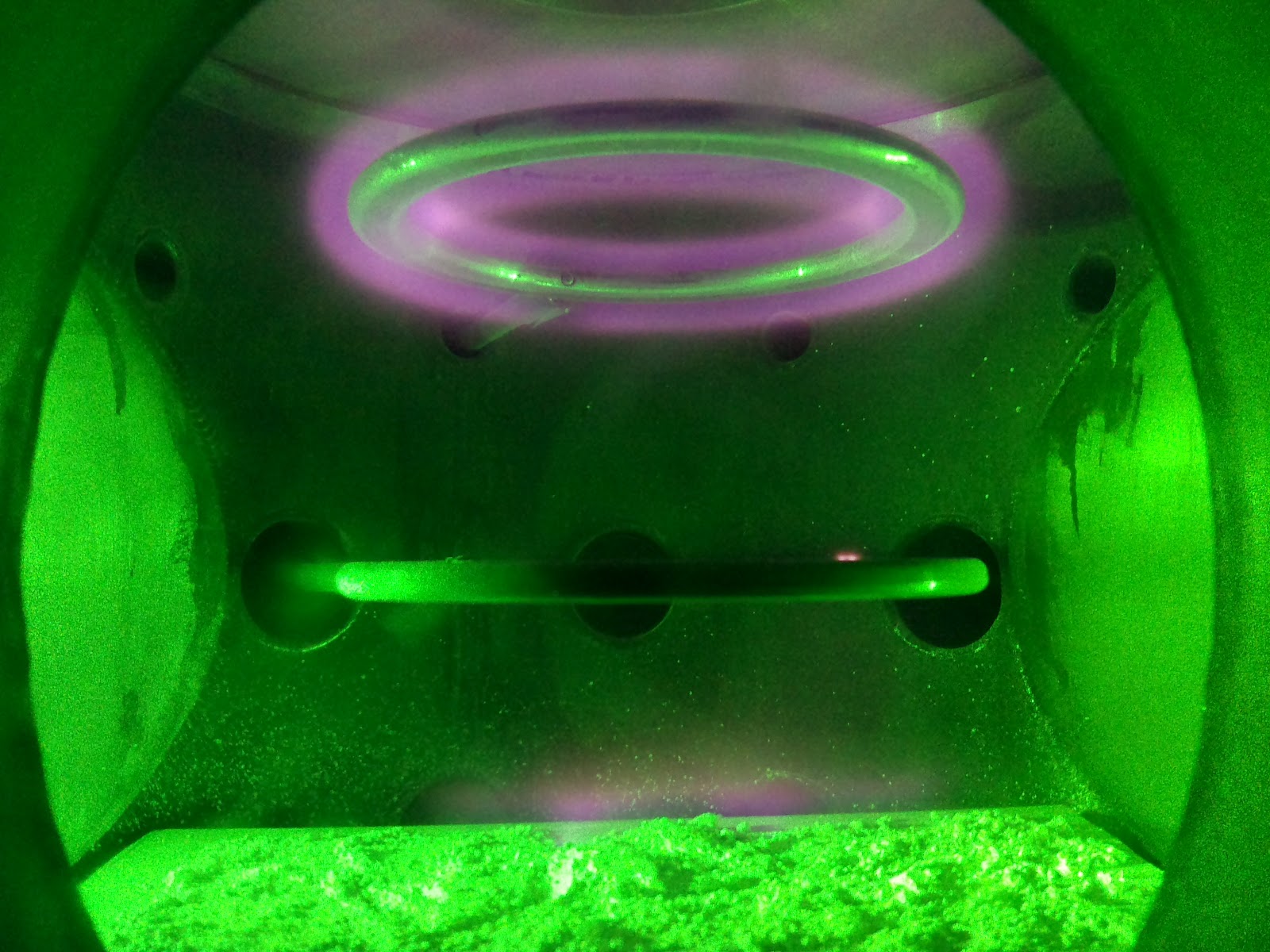Plasma Physics Research
Princeton Plasma Physics Laboratory: June-August, 2012
Trying to characterize the behavior of dust-filled plasma

At the Princeton Plasma Physics Lab, I spent a summer trying to figure out how certain types of plasma behave. Specifically, we were trying to determine how dust-acoustic shockwaves propagated through complex plasma - that is, plasma that was made up of electrons, ions, and dust particles. The trouble was, these types of shockwaves are hard to induce; most of my work involved designing and running experiments to produce them. The experiment was enclosed in a vacuum chamber, making adjustments difficult.
My main contribution was the development of a mechanism for adjusting the experimental setup on the fly, without needing to open the vacuum chamber. This was made possible by passing a cylindrical rod through two Wilson seals on opposite sides of the chamber, and suspending a "nozzle" - a metal plate with a small hole - from this rod. By rotating the rod, the plate's height could be adjusted, allowing rapid data collection on the nozzle's effect on waves in the plasma
I also did a bunch of stuff in MATLAB to automate retrieval of data from the high-speed camera, and to automatically figure out wave propagation speeds from the camera images.
I kept a blog about my PPPL internship.

